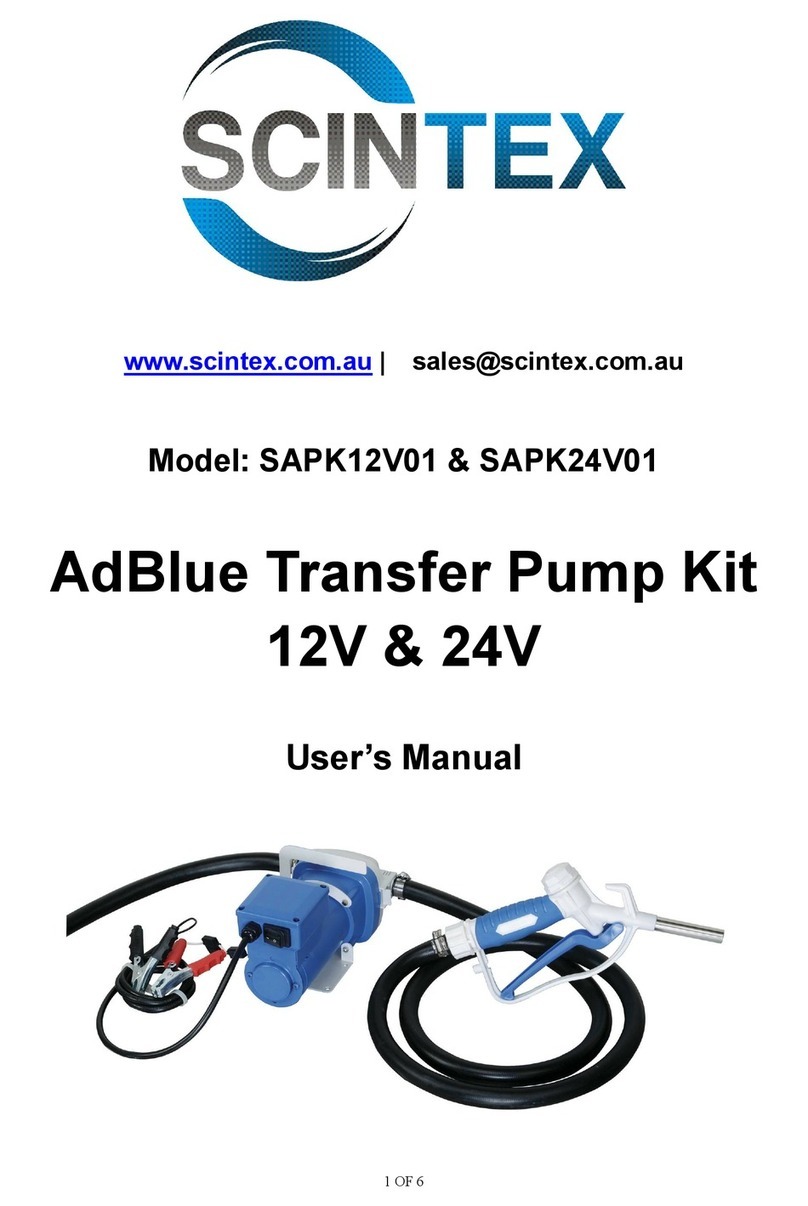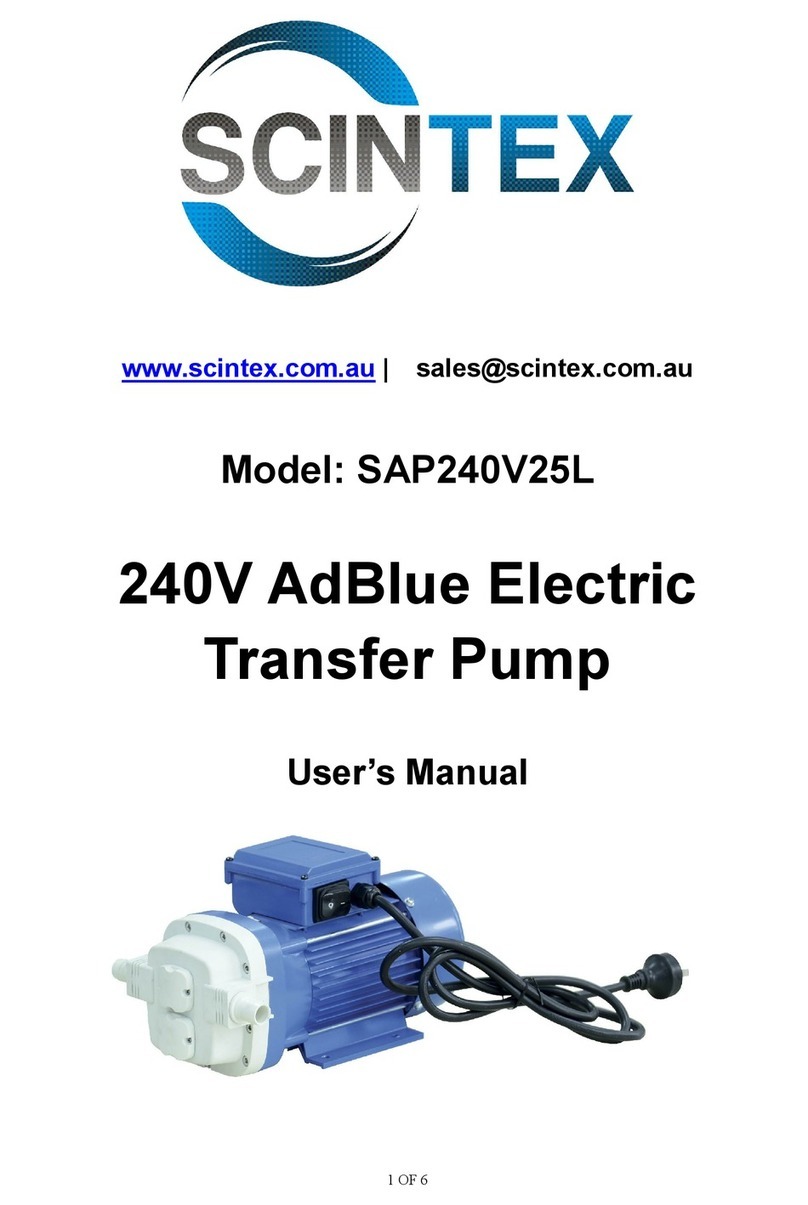
QF1200S; edition 2016-05; page 10 of 24
3.6. Safety instructions for maintenance, inspection and mounting
operations
oBasically, operations at the pump must be performed during standstill only.
The motor has to disconnect from the power supply, e.g. by pulling out the
power plug or using a repair switch, and has to secure against unintentional
switch-on. This can be realized by a lockable emergency switch. To prevent
an accidental re-starting a danger sign should be installed.
oThe operator must ensure that all maintenance, inspection and installation work is
performed by authorized and qualified skilled personnel acquainted themselves
with this manual.
oBefore starting to disassemble the pump, take care that the pump has been
emptied, rinsed, depressurized and disconnected at all phases of the power
supply. Both ports piping are to be closed and drained if applicable. If the pump is
being deported from the plant, a reference about the delivered liquid has to be
attached.
oPumps or aggregates handling noxious fluids (e.g. caustic, bio hazardous) must
be decontaminated. Immediately following completion of the work, all safety-
relevant and protective devices must be re-installed and/or re-activated. Before
putting the pump back into operation, take care of the mentioned instructions of
the chapter “start-up” and check the tightness of the pump.
oPlease respect the relevant additional security advices, if the pump has been
used for aggressive, dangerous or toxic liquids (e.g. suitable protective equipment
according to the safety data sheet of the liquid). In case of a diaphragm rupture, it
is possible that residues of the liquid remain behind the diaphragms and in the
area of the ring drive. Hence, appropriate safety equipment according to the
safety data sheet of the liquid is indispensable.
oEspecially when deliver critical liquids, wear parts, like diaphragms, should be
replaced within a preventive maintenance.
oProcedure for pump return: According to the requirements of our 14001-
certification, every unit which is send to ALMATEC for diagnosis or maintenance
reasons has to be accompanied by a filled out decontamination-sheet. Otherwise
a processing is not possible. The decontamination-sheet is enclosed to this
manual. Please pay attention to the further safety regulations.
3.7. Unauthorized reconstruction and spare part usage
The use of non-original Quattroflow spare parts or not authorized accessories and
reconstructions lead to the lapse of the warranty immediately. When operating such a
pump, damages of properties and/or persons cannot be excluded..
3.8. Inadmissible modes of operation
A safety operation of the pump is ensured only by an appropriate use according to the
specific data of the enclosed pump data sheet. The values limitations given in the data
sheet must not be exceeded.




















